Source, by: Flags of the World





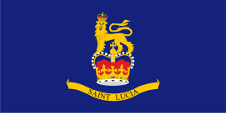
since 1979,
Flag of the Governor General,
ratio = 1:2,
Source, by: Flags of the World




Saint Lucia
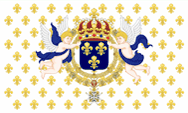
from 1650,
Flag of France,
Source, by: Sodacan [CC BY-SA 3.0], via Wikimedia Commons



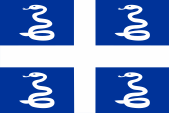
1766–1796,
Merchant flag for Saint Lucia and Martinique,
Source, by: Wikipedia (EN)





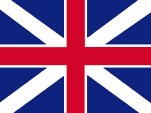
1664–1707,
Flag of the Commonwealth of England, Scotland and Ireland,
Source, by: Die Welt der Flaggen





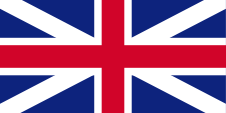
1707–1801,
Flag of United Kingdom,
Source, by:
Die Welt der Flaggen






1801–1967,
Union Flag → quasi national flag,
Flag of United Kingdom,
ratio = 1:2,
Source, by: Wikipedia (EN)





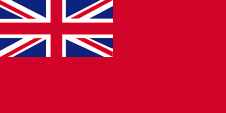
1864–1979,
Merchant flag,
ratio = 1:2,
Source, by: Flags of all Nations





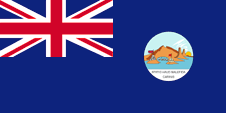
1875–1939,
Flag of the government (state flag),
ratio = 1:2,
Source, by: Flags of the World



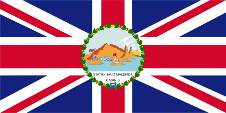
1875–1939,
Flag of the Administrator/Commissioner,
ratio = 1:2,
Source, by:
Flags of the World



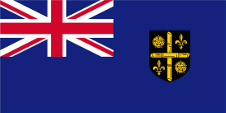
1939–1967,
Flag of the government (state flag),
ratio = 1:2,
Source, by: Flags of the World



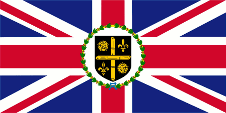
1939–1979,
Flag of the Administrator/Commissioner,
ratio = 1:2,
Source, by:
Flags of the World



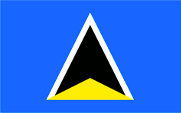
1967–1979,
National and state flag,
ratio = 5:8,
Source, by: Flags of the World



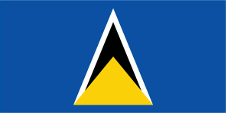
1979–2002,
National, state and merchant flag,
ratio = 1:2,
Source, by: Flags of the World, Wikipedia (EN)




Windward Islands (1833–1958):
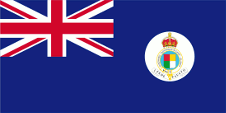
1886–1958,
doubtful,
Flag of the government (state flag),
ratio = 1:2,
Source, by: Flags of the World



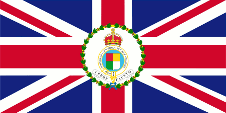
1886–1960,
Flag of the Governor,
ratio = 1:2,
Source, by:
Flags of the World




Federation of the West Indies (1958–1962):
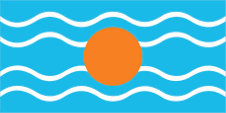
Flag of the Federation of the West Indies,
ratio = 1:2,
Source, by: Flags of the World



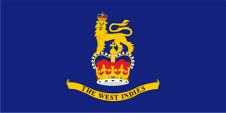
Flag of the Governor General,
ratio = 1:2,
Source, by:
Flags of the World




The flag of Saint Lucia was introduced – in its basic form – on 1st of March in 1967 for the associated state, and officially adopted on 22nd of February in 1979 when independence was achieved. It was designed by the local artist Dunstan St. Omer and shows three superimposed triangles in the colours yellow (today: orange/gold), black and white on a blue (today: cerulean blue) background. The blue represents the sky and the sea, the triangular pattern the island rising out of it; a stylised representation of the twin peaks of the two cone-shaped volcanoes Gros Piton and Petit Piton on the south-west coast of the country. Yellow symbolises sunshine, sandy beaches and prosperity, while the black refers to the volcanic origins of the island state on the one hand and white and black stand for the two population groups on the other. When independence was gained in 1979, the design of the flag was changed slightly. From this year onwards, it has the ratio 1:2 and the stylised mountain is more pointed and steeper, so that today it appears in an ratio of 1:2. Since 2002, a much lighter blue (cerulean blue) has been used as the colour of the flag bunting. The colours are probably not defined.
Initially, the island was disputed between France and England/United Kingdom. In the Peace of Paris of 1814, United Kingdom was officially awarded the island, so that from that year onwards the flag of United Kingdom flew unchallenged over the islands, which between 1838 and 1958 belonged administratively to the British colony of the Windward Islands. The Windward Islands were part of the United Kingdom, had their own administration and their own governor. On land, and until 1864 also at sea, individual citizens and the authorities represented their status as citizens or bodies of the United Kingdom by using the Union Jack, known as the Union Flag.
United Kingdom had introduced a flag system in 1864 in which:
• Warships use a so-called "White Ensign" (naval flag), a white flag often with a red St. George's cross throughout and with the Union Jack in the upper corner,
• Merchant ships use a so-called "Red Ensign" (also called "Civil Ensign" → citizen flag, the actual merchant flag), a red flag with the Union Jack in the upper corner, and
• Governmental ships use a "Blue Ensign" (flag of the government → the actual state flag), a blue flag with the Union Jack in the upper corner.
Since 1865, colonial government ships were permitted to use a Blue Ensign with a badge in the flying end. From this point on, only the British Union Jack was to be used for all other purposes on land and the usual red British merchant flag, the "Red Ensign", at sea. If the British Admiralty had granted the appropriate permission to one colony, merchant ships and private sailors from this colony were allowed to use a Red Ensign with the Bagde. This was not the case for the Windward Islands. The respective governments should provide appropriate bagdes.
Such a badge was often a regional landscape representation placed on a disk, often showed ships, historical events or could just be a kind of logo. Very often a badge also showed the name of the country or a motto. However, some possessions had a coat of arms right from the start, or received their own coat of arms over the years and the badge was abolished. In order to ensure a largely uniform appearance in the flying end of the flags, coats of arms and other symbols were displayed on a white disk the same size as the earlier badges. But there were exceptions here, as some colonies did not use this white disk and placed their coat of arms or just the shield – sometimes enlarged – directly on the flag cloth. As early as the 1940s, the white discs were removed and the coat of arms was placed directly or enlarged. This transition process occurred gradually, never simultaneously and completely. In some British possessions flags with the white disc are still in use, in others they are no longer used and in some areas both variants exist side by side. The Windward Islands were given their own badge in 1886. It showed a shield divided into four parts with the colours red, yellow, green and white, surrounded by a white belt with the inscription "Governor in Chief, Windward Islands", with the British crown above. Below a white banner with the motto of the islands: "i pede fausto" → "Walk with a blessed foot".
However, the individual colonies of the Windward Islands had their own "Blue Ensigns" with their own badge; only the governor used the badge on his flag. A "Blue Ensign" for the Windward Islands may nevertheless have existed. From 1875 to 1939, the government of Saint Lucia, as a British colony, used the blue British official flag (Blue Ensign) with a badge in the waving part of the flag. The badge showed a picture of Soufriére Bay with four anchored ships and the two cone-shaped volcanoes Gros Piton and Petit Piton on a disc. Below, the island's motto at the time: "Statio haud malefida carinis" → "With ships, standing still is not a bad thing". Between 1939 and 1967, the shield of the colony's coat of arms was used as a badge on the official flag (Blue Ensign).
At the same time, the colony was part of the British colony "West Indian Federation" from 1958 to 1962, an attempt to consolidate the administration and also to counteract the independence efforts of the associated islands and colonies. The flag of the "West Indian Federation" was a light blue flag with four horizontal white wavy lines and a golden disc in the middle. It symbolized the sun over the Caribbean Sea. There is some doubt about the color of the blue; it is often assumed to be the usual British heraldry blue. However, a contemporary description calls it an "imperial blue" which would be light blue and many contemporary prints also show this light blue.
On 27th of February in 1967, internal self-government was granted by United Kingdom and Saint Lucia became an autonomous state associated with United Kingdom. In this context, the current flag was introduced, which ended the tradition of the "Blue Ensigns".
Source: Die Welt der Flaggen,
Flaggen Wappen Hymnen,
Flags of the World,
Wikipedia (EN),
Volker Preuß

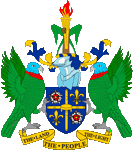
since 1979,
Coat of arms of Saint Lucia,
Source, by: Corel Draw 4
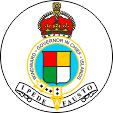
1886–1958,
Windward Islands,
Badge of the Windward Islands,
Source, by: Flags of the World
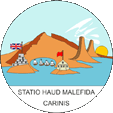
1875–1939,
Saint Lucia,
Badge of Saint Lucia,
Source, by: Flags of the World

1939–1967,
Saint Lucia,
Escutcheon and badge of Saint Lucia,
Source, by: Flags of the World

The coat of arms of the state was awarded on 16th of august in 1939, and was several changed; On 1st of march in 1967, when
Saint Lucia gets an associated state, and on 22nd of february in 1979, as Saint
Lucia achieves the independence. The blazon is divided by a suspended cross from bamboo, in the quarters two roses and two lilies, which refer for the British and French colonial reign in the past. As shield holders officiate to the left and on the right of the shield two green parrots. Above the shield a European helmet with a abundant helmet ornamentation. In the middle, on the helmet, a human arm with a torch. Below the blazon the motto ribbon with the motto of the state: "The Land, the People, the Light".
Source:
Die Welt der Flaggen,
Flaggen Wappen Hymnen,
Wikipedia (EN),
Volker Preuß

Location:
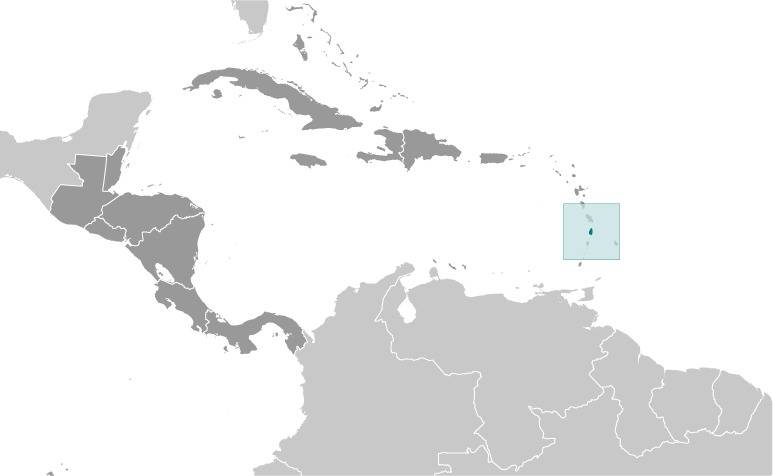
Source: CIA World Factbook
Map of the country:
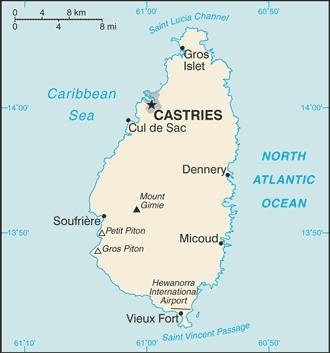
Source: CIA World Factbook

Area: 238 square miles
Inhabitants: 178.696, thereof 85% Black, 11% Mulatto, 2% Indians, 1% Europeans
Religions: 67% Roman Catholic, 10% Protestant, 2% Rastafari, 2% Anglican
Density of Population: 751 inh./sq.mi.
Capital: Castries, 3.661 inh. (2010)
official Language: English
other Languages: French Creole
Currency: Eastern Caribbean Dollar (XCD, EC-$) = 100 Cents
Time Zone: GMT – 4 h
Source:
Wikipedia (D)

probable possibilities of the discovery of the island:
• 1499 · the Spanish seafarer Juan de la Cosa discoveres the island and names it "El Falcon"
• 13th of December in 1502 · the Spanish seafarer Christoph Columbus discovers the island and names it "Isla de Santa Lucia", the island becomes a Spanish possession but was not colonized
• 13th of December in 1502 · at the day of the Holy Lucia of Syracus shipwrecks a French sailing vessel, the survived crew names the island by the Holy Lucia ("Sainte Lucie"), that day is today the national holiday
1600 · for some years Dutch base
1605 · first English settlement fails because of the resistance of the Caribs on the island
1639–1640 · second English settlement fails because of the resistance of the Caribs on the island
1647 · French settlement
1650 · the French are successful in expand of their zone of influence on the island
1650–1664 · Saint Lucia is French colony, decimation of the Caribs
1664–1667 · Saint Lucia is occupied by England, decimation of the Caribs
1667–1803 · the ownership of the island changes very often between France and England/United Kingdom, just as it was declared for two times to a neutral zone, decimation and eradication of the Caribs
1814 · the British ownership of the island becomes confirmed by treaty
1838 · Saint Lucia becomes a crown colony
1838–1958 · part of the British Colony of the Windward Islands
1958–1962 · part of the British Colony of the "Federation of the West Indies"
27.02.1967 · United Kingdom grants interior self administration (autonomy as with United Kingdom associated state)
22.02.1979 · United Kingdom grants independence within the framework of the Commonwealth of Nations
Source:
Atlas zur Geschichte,
World Statesmen,
Wikipedia (EN)

The name "Saint Lucia" was awarded to this island by Columbus or by shipwrecked French sailors on the day of Saint Lucy in the year 1502. Saint Lucy lived ca. between the years 285 and 310 in Syracus on Sicily. She died a dreadful martyr-death for her religion. She is the patron of the light.
Source: Wikipedia (EN)


![]()

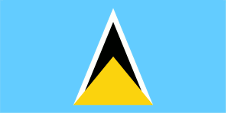








































![]()
